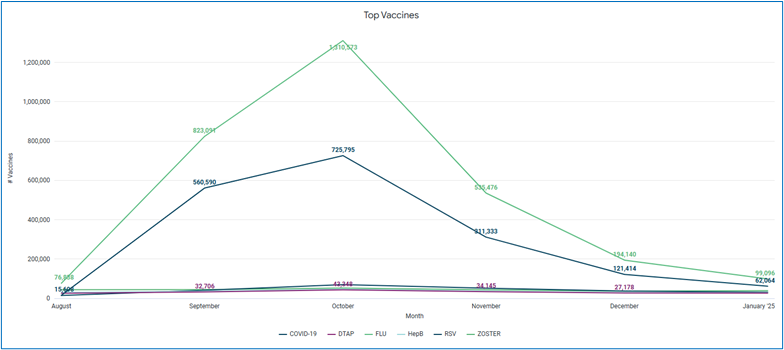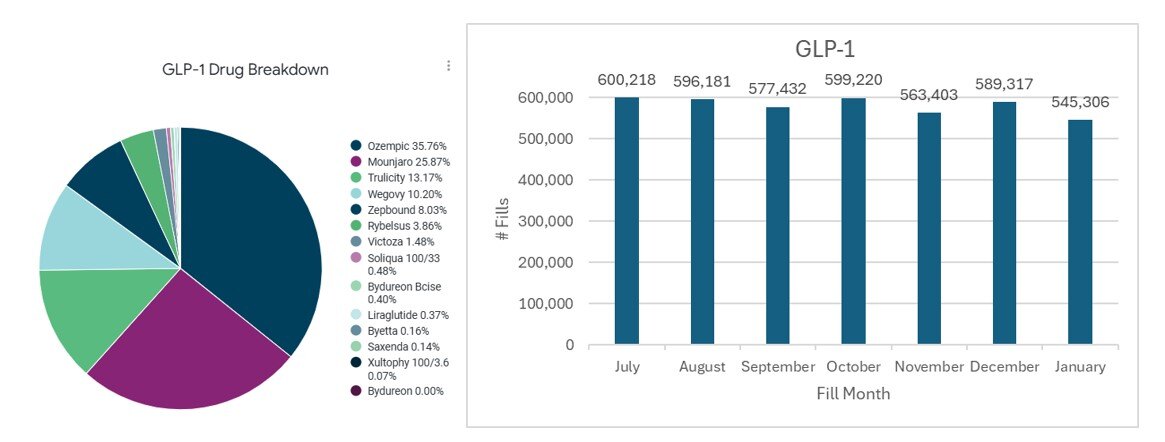The Crucial Role of Inventory Control in Pharmacy Management

In the fast-paced world of pharmacy management, maintaining an efficient and effective inventory control system is paramount. As pharmacy owners and staff, understanding the intricacies of inventory management can significantly impact your business’s success and patient satisfaction. Let’s delve into why inventory control is essential and how it can transform your pharmacy operations.
- Optimizing Stock Levels
Robust inventory control optimizes stock levels. The January 2025 Outcomes Index shows that the average monthly number of patients per network pharmacy is 1,546, an increase of 13.5 unique patients from the previous month. Monthly average scripts are also rising, as expected for the beginning of a new year.

As your business grows, it's crucial to maintain an adequate supply of medications without overstocking, which can lead to wastage and increased costs. Leveraging your pharmacy management system (PMS) reporting, like a Refills Due Report, allows you to anticipate medication seasonality and adjust stock limits proactively. Using the Index to monitor branded and top-selling generic drug trends allows you to manage inventory levels by leveraging wholesaler returns and resetting reorder points. A multi-pronged approach to controlling your drug costs will positively impact your customer service and cash flow, both critical aspects of a successful business.

- Reducing Costs and Increasing Profitability

Effective inventory management reduces costs from expired or unused medications. For example, 85% of prescriptions are for cost-effective generic drugs. Monitoring inventory ensures the right stock balance of generics and brand-name medications, maximizing profitability. Just-in-time ordering helps avoid outdated medication losses and financial setbacks. Additionally, it provides insights into contractual obligations for GER (Generic Effective Rate) and GDR (Generic Dispensing Rate).
- Enhancing Patient Care
Inventory control directly impacts patient care. Ensuring that essential medications, such as those for chronic diseases, are always available can significantly improve patient adherence and outcomes. Additionally, having a reliable stock of vaccines, like the influenza and COVID-19 vaccines, is crucial for public health and patient trust.
The January 2025 Index report for top vaccine prescriptions indicates high dispensing rates for both flu and COVID-19 vaccines. When combined with information on antiviral medication dispensing, you can see that flu cases escalated quickly beginning in November 2024. Having this type of insight can help you to educate patients on the importance of when to get vaccinated and to plan for your vaccine and antiviral stock needs.
You can never plan too early for next year’s flu season. Vaccine preorders can be informed by taking a retrospective look at the information the Index provides. Be sure to set a reminder to come back to the Index when it’s time to order your 2025-26 vaccine supply.


- Leveraging MTM & Medication Synchronization for Better Inventory Management
Technology greatly enhances inventory management. Data from the Index shows that over 10.6 million MTM claims were submitted in 2024, inclusive of both Comprehensive Medication Review (CMR) and Targeted Intervention Program (TIP) activities. Engaging in MTM opportunities can help identify patients who would benefit from a medication synchronization program, which can help manage your pharmacy's medication needs and automate reordering, improving inventory efficiency.
- Adapting to Market Trends
Keeping up with market trends is important for effective inventory control. The January 2025 Outcomes Index reports a steady use of GLP-1 drugs across our pharmacy network, with Ozempic and Mounjaro leading the pack. By tracking such trends, pharmacies can adjust their inventory to meet changing demands, maintaining competitiveness and responsiveness to patient needs.

- Improving Inventory Control Reduces Risks
Proper inventory control ensures compliance with regulatory requirements, such as DSCSA (Drug Supply Chain Security Act), and reduces the risk of medication errors. Maintaining accurate records and following best practices, such as monthly monitoring of out-of-date medications, can minimize the risk of unfavorable audit results and sending a patient home with a short-dated or out-of-date medication.
Make Every Dollar Count in 2025!
Now is the perfect time to review your inventory practices. Effective inventory control is a cornerstone of successful pharmacy management. By optimizing stock levels, reducing costs, adapting to market trends, and improving compliance, pharmacy owners and staff can ensure their business thrives while providing exceptional service to their patients. Embrace the power of inventory control by leveraging solutions for data analytics.
Outcomes offers several options to meet your data and business analytics needs, click below to learn more about how Outcomes solutions can help you effectively manage your inventory. There is no time like the present to start using data to drive your business decisions and to watch your pharmacy, and patients, flourish.


.jpg)


